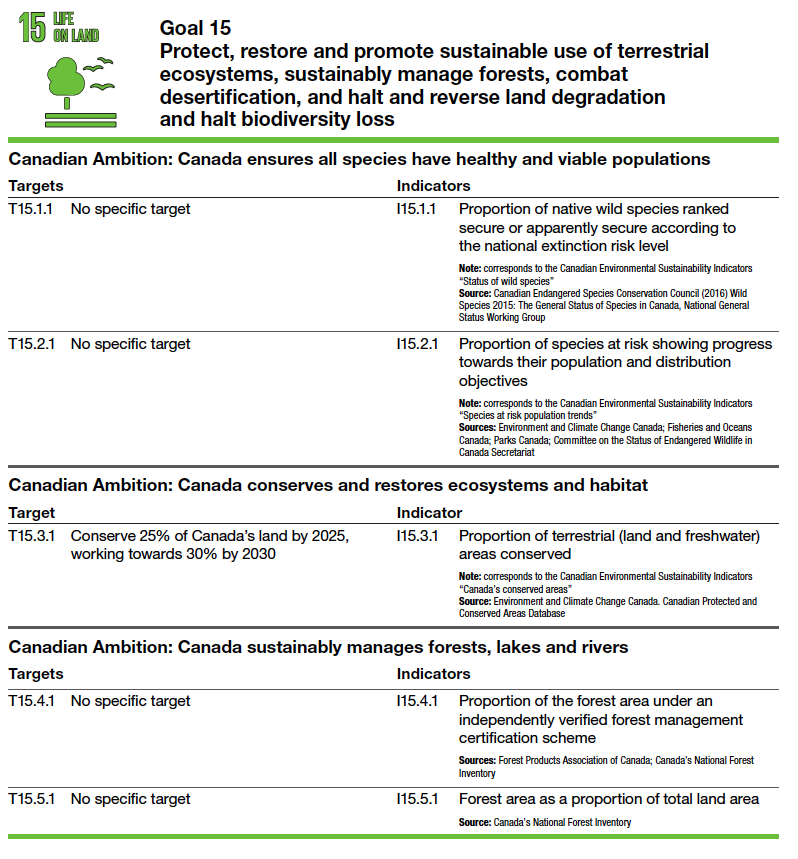Week 8
SDG #15 – Life on Land

Video
In this 24-minute video made available from the SDG Academy, Jeffrey Sachs looks at biodiversity as an integral part of ecosystems functioning and explores why biodiversity is being threatened today.
Analysis
Sustainable management of lands and forests, including through conservation and protected areas, is key to maintaining healthy ecosystems and ensuring their benefits, including filtering air and water, and storing carbon dioxide[1].
Nature is critical to our survival. Nature provides us with our oxygen, regulates our weather patterns, pollinates our crops, produces our food, feed, and fibre. But it is under increasing stress. Human activity has altered almost 75% of the earth’s surface, squeezing wildlife and nature into an ever-smaller corners of the planet[2].
Around 1 million animal and plant species are threatened with extinction, many within decades according to the 2019 Global Assessment Report on Biodiversity and Ecosystem Service. The report called for transformative changes to restore and protect nature. It found that the health of ecosystems on which we and all other species depend is deteriorating more rapidly than ever, affecting the very foundations of our economies, livelihoods, food security, health, and quality of life worldwide2.
Deforestation and desertification, caused by human activities and climate change, pose major challenges to sustainable development, and have affected the lives and livelihoods of millions of people. Forests are vitally important for sustaining life on Earth and play a major role in the fight against climate change2. And investing in land restoration is critical for improving livelihoods, reducing vulnerabilities, and reducing risks for the economy.
The health of our planet also plays an important role in the emergence of zoonotic diseases, i.e. diseases that are transmissible between animals and humans. As we continue to encroach on fragile ecosystems, we bring humans into ever-greater contact with wildlife, enabling pathogens in wildlife to spill over to livestock and humans, increasing the risk of disease emergence and amplification2.
Fast Facts
- Human activity has altered 75% of the earth’s surface, forcing wildlife and nature into an ever-smaller corner of the planet and increasing risks of zoonotic diseases including COVID-19.
Forests
- Approximately 1.6 billion people depend on forests for their livelihood, including 70 million indigenous people;
- Forests are home to more than 80% of all terrestrial species of animals, plants, and insects;
- Between 2010 and 2015, the world lost 3.3 million hectares of forest areas;
- Currently, land degradation has reduced productivity in 23% of the global terrestrial areas, and between $235 billion and $577 billion in annual global crop output is at risk as a result of pollinator loss.
Desertification
- Arable land loss is estimated at 30 to 35 times the historical rate;
- Due to drought and desertification, 12 million hectares are lost each year (23 hectares per minute). That’s the equivalent of 20 million tons of lost grain per year;
- Over 74% of those living in poverty are directly affected by land degradation globally;
- Habitat loss and deterioration, largely caused by human actions, have reduced global terrestrial habitat integrity by 30%.
Biodiversity
- Illicit poaching and trafficking of wildlife continue to stall conservation efforts, with 7,000 species of plants and animals reported in illegal trade involving 120 countries;
- Of the 8,300 animal breeds known, 8% are extinct and 22% are at risk of extinction;
- Fish provide 20% of animal protein to about 3 billion people;
- Over 80% of the human diet is provided by plants, with 3 cereal crops: rice, maize and wheat providing 60% of energy intake;
- Approximately 80% of people living in developing countries rural areas rely on traditional plant¬‐based medicines for basic healthcare;
- Micro-organisms and invertebrates are key to ecosystem services, but their contributions are still poorly known and rarely acknowledged;
- While protected areas now cover 15% of terrestrial and freshwater environments and 7% of marine systems, they only partly cover important sites for biodiversity and are not yet fully ecologically representative and effectively or equitably managed.
Why it Matters
Why should I care about the protection, restoration, and sustainable use of terrestrial ecosystems?
Globally, one fifth of the Earth’s land area (more than 2 billion hectares) are degraded. Land degradation is undermining the well-being of some 3.2 billion people, driving species to extinction and intensifying climate change. Currently, biodiversity is declining faster than at any other time in human history.
Targets and Indicators for Canada
Below is Canada’s approach to measuring progress on SDG #15 – Life on Land. Note the targets and indicators chosen[3].

Recommended Readings
- United Nations. (2021). The Sustainable Development Goal Report, 2020. Protect, restore and promote sustainable use of terrestrial ecosystems, sustainably manage forests, combat desertification, and halt and reverse land degradation and halt biodiversity loss.
- IPBES (2019): Summary for policymakers of the global assessment report on biodiversity and ecosystem services of the Intergovernmental Science-Policy Platform on Biodiversity and Ecosystem Services.
- Global Affairs Canada. (2018). Canada’s Implementation of the 2030 Agenda for Sustainable Development: voluntary national review. ↵
- United Nations. (2021). Sustainable Development Goals. ↵
- Statistics Canada. (2021). The Canadian Indicator Framework for the Sustainable Development Goals - 2021 ↵

